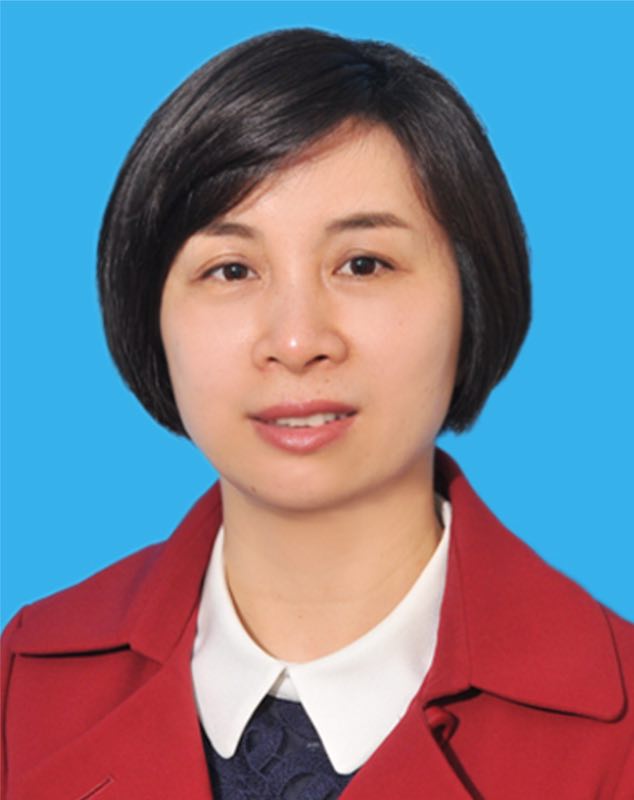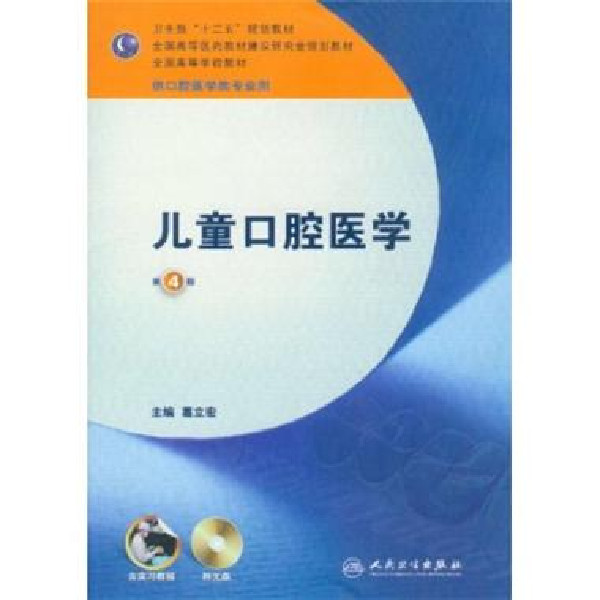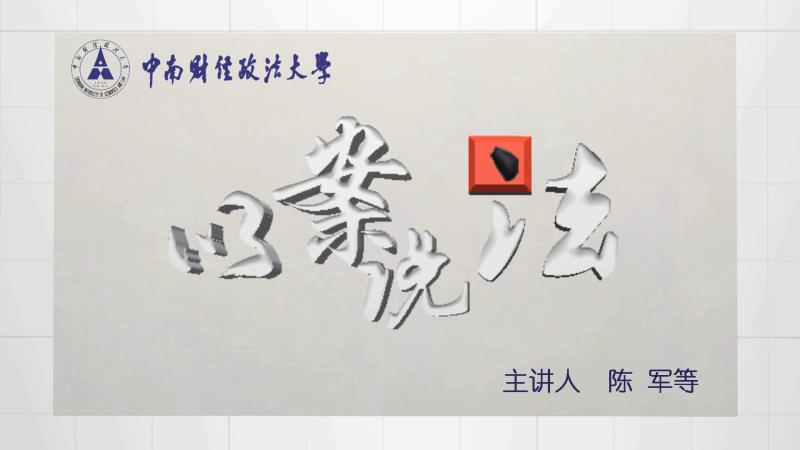
Molecular Biology课程:前往报名学习
The mysteries of life are hidden in DNA, RNA and protein. The main objects of molecular biology research are nucleic acid and protein, which are the golden key to open the mysteries of life. Let's learn this course together to safeguard human health!
开设学校:中南大学;学科:理学、
The mysteries of life are hidden in DNA, RNA and protein. The main objects of molecular biology research are nucleic acid and protein, which are the golden key to open the mysteries of life. Let's learn this course together to safeguard human health!
-1.1 The research content of molecular biology
--1.1 The research content of molecular biology
--1.1 The research content of molecular biology
-1.2 Important events in the development of molecular biology
--1.2 Important events in the development of molecular biology
--1.2 Important events in the development of molecular biology
-1.3 Molecular Biology and Related Disciplines
--1.3 Molecular Biology and Related Disciplines
--1.3 Molecular Biology and Related Disciplines
-2.1 The Concept and Structure of Genes
--2.1 The Concept and Structure of Genes
--2.1 The concept and structure of genes
-2.2 Prokaryotic genome
-2.3 Eukaryotic genome
-2.4 Viral genome
-Unit assignment for week 1
-3.1 The common characteristics of gene expression in prokaryotes and eukaryotes
--3.1The common characteristics of gene expression in prokaryotes and eukaryotes
--3.1The common characteristics of gene expression in prokaryotes and eukaryotes
-3.2 Mechanism of gene expression regulation in prokaryotes
--3.2Mechanism of gene expression regulation in prokaryotes
--3.2Mechanism of gene expression regulation in prokaryotes
-3.3 Characteristics and regulation of genomic DNA expression in eukaryotes
--3.3 Characteristics and regulation of genomic DNA expression in eukaryotes
--3.3 Characteristics and regulation of genomic DNA expression in eukaryotes
-3.4 Regulation of eukaryotic gene expression at transcriptional and post-transcriptional level
--3.4Regulation of eukaryotic gene expression at transcriptional and post-transcriptional level
--3.4 Regulation of eukaryotic gene expression at transcriptional and post-transcriptional level
-4.1 Causes and Consequences of DNA Damage
--4.1Causes and Consequences of DNA Damage
--4.1Causes and Consequences of DNA Damage
-4.2 Mismatch Repair and Direct Repair
--4.2 Mismatch Repair and Direct Repair
--4.2 Mismatch Repair and Direct Repair
-4.3 Base Excision Repair and Nucleotide Excision Repair
--4.3 Base Excision Repair and Nucleotide Excision Repair
--4.3 Base Excision Repair and Nucleotide Excision Repair
-4.4 Recombination Repair and SOS Repair System
--4.4 Recombination Repair and SOS Repair System
--4.4 Recombination Repair and SOS Repair System
-Unit assignment for week 3
-5.1 DNA sequence analysis
-5.2 Polymerase chain reaction
--5.2 Polymerase chain reaction
--5.2 Polymerase chain reaction
-5.3 Real-time fluorescence quantitative PCR
--5.3 Real-time fluorescence quantitative PCR
--5.3 Real-time fluorescence quantitative PCR
-5.4 Nucleic acid molecular hybridization techniques
--5.4 Nucleic acid molecular hybridization techniques
--5.4 Nucleic acid molecular hybridization techniques
-6.1 Principal enzymes used in gene cloning
--6.1 Principal enzymes used in gene cloning
--6.1 Principal enzymes used in gene cloning
-6.2 Vectors for Gene cloning
--6.2 Vectors for Gene cloning
-- 6.2 Vectors for Gene cloning
-6.3 The principal process of gene cloning
--6.3 The principal process of gene cloning
--6.3 The principal process of gene cloning
-6.4 The E.coli expression system
--6.4 The E.coli expression system
--6.4 The E.coli expression system
-Unit assignment for week 4
-7.1 The Concept and History of Proteomics
--7.1 The Concept and History of Proteomics
--7.1 The Concept and History of Proteomics
-7.2 Research method of proteome expression pattern--Two-dimensional electrophoresis
--7.2 Research method of proteome expression pattern--Two-dimensional electrophoresis
--7.2 Research method of proteome expression pattern--Two-dimensional electrophoresis
-7.3 Research method of proteome expression pattern-- Mass spectrometr
--7.3 Research method of proteome expression pattern-- Mass spectrometry
--7.3 Research method of proteome expression pattern-- Mass spectrometry
-7.4 Research Methods of Proteome Functional pattern
--7.4 Research Methods of Proteome Functional pattern
--7.4 Research Methods of Proteome Functional pattern
-Unit assignment for week 5
-8.1 Abormalities in genes and proteins are the molecular basis of diseases
--8.1 Abormalities in genes and proteins are the molecular basis of diseases
--8.1 Abormalities in genes and proteins are the molecular basis of diseases
-8.2 Cell-related factors cause abnormal gene expression and cause disease
--8.2 Cell-related factors cause abnormal gene expression and cause disease
--8.2 Cell-related factors cause abnormal gene expression and cause disease
-9.1 Concept, Features and Strategies of Gene Diagnosis
--9.1 Concept, Features and Strategies of Gene Diagnosis
--9.1 Concept, Features and Strategies of Gene Diagnosis
-9.2 Molecular Biology Techniques Commonly Used in Gene Diagnosis
--9.2 Molecular Biology Techniques Commonly Used in Gene Diagnosis I
--9.2 Molecular Biology Techniques Commonly Used in Gene Diagnosis I
-9.3 Molecular Biology Techniques Commonly Used in Gene Diagnosis II
--9.3 Molecular Biology Techniques Commonly Used in Gene Diagnosis II
--9.3 Molecular Biology Techniques Commonly Used in Gene Diagnosis II
-9.4 Gene Diagnosis of Sickle Cell Disease
--9.4 Gene Diagnosis of Sickle Cell Disease
--9.4 Gene Diagnosis of Sickle Cell Disease
-Unit assignment for week 6
-10.1 Basic strategies for gene therapy
--10.1 Basic strategies for gene therapy
--10.1 Basic strategies for gene therapy
-10.2 Gene transfer
-10.3 Gene interference
-10.4 Controlled expression of therapeutic genes
--10.4 Controlled expression of therapeutic genes
--10.4 Controlled expression of therapeutic genes
-10.5 Application of gene therapy
--10.5 Application of gene therapy
--10.5 Application of gene therapy
-Unit assignment for week 7
-Final Exam
教授,博士生导师。教育部新世纪优秀人才、芙蓉学者、湖南省121人才,湖南省血液学基础与应用重点实验室主任。兼任湖南省生化与分子生物学学会副理事长,中国医学生化与分子生物学学会常务理事,中国生理学会血液学专业委员会委员;国家精品资源共享课“医学分子生物学”课程负责人,湖南省级慕课“分子生物学”课程负责人,湖南省研究生优秀课程“高级分子生物学”教学团队负责人。从事造血发育和肿瘤发生与治疗研究,主持国家自然科学基金重点国合项目、科技部重点研发计划等课题13项;在Blood,PNAS,JACS等杂志发表论文80多篇,总被引1600多次;获发明专利授权6项;获国家教学成果二等奖(第1)、湖南省自然科学奖(第2)等国家、部省级奖励。
中南大学生命科学学院生物化学与分子生物学系教授,硕/博士生导师,从事分子生物学教学与科研工作。曾主持或参与国家自然科学基金项目5项、教育部CMB项目1项及湖南省自然科学基金、湖南省科技厅重点专项等相关研究6项。研究方向为:DNA损伤与修复、肿瘤微环境代谢与基因治疗、感染与免疫。发表SCI等专业学术论文40余篇,参编教材6部。2015年参与获得中南大学高等教育教学成果奖一等奖;2017年获中南大学创新创业项目优秀指导教师等奖励。为湖南省普通高校青年骨干教师、中国生物化学与分子生物学教学专业委员会青年委员会委员、湖南省神经科学学会神经生化与代谢专业委员会委员、中南大学研究生院研究生教育督导。
博士,中南大学生命科学学院生物化学与分子生物学专业教授,博士生导师,是“重大人类疾病的分子靶标发现与新药开发”生物学研究领域的学术带头人。2016年,他获得了长沙国家高新区创新与企业家精神领军人物,并于2017年获得中南大学比亚迪优秀教师奖。他目前是中国植物学会药用植物与植物药专业委员会委员,中国生物化学与分子生物学学会会员,湖南植物学会副理事长。从2008年到2009年,他是印第安纳大学医学院的访问学者。他长期从事医学分子生物学的教学以及抗肿瘤新药的发现和天然药物的生物合成合成生物学的研究。他获得了九项国家自然科学基金,发表了SCI等60多篇论文,并获得了23项中国发明专利。
副教授,研究生导师。2015-2016在美国纽约血液中心从事博士后科学研究工作。主要利用药物、核酸适体等手段,从事红系发育及相关疾病如多发性骨髓瘤,白血病等方面的研究。主持多项科学基金,包括中央军委科技委创新培育项目、国家自然科学基金青年基金、湖南省青年基金、博士点基金以及博士后基金面上项目等,另外参与多项国家自然科学基金项目。发表并参与发表SCI论文26篇。参与出版教材参考书两本。
中南大学生命科学学院生物化学与分子生物学系副研究员,硕士生导师。承担生物科学四年制、医学类五年制、临床医学八年制、研究生《分子生物学 》理论与实验的教学。主持国家自然科学基金、湖南省自然科学基金课题各1项。在国内外学术刊物发表论文20余篇,获国家发明专利授权1项。获湖南省科技进步三等奖1项(排名第5), 获教育部国家教学成果二等奖1项(排名第9),获湖南省高等教育省级教学成果一等奖1项(排名第5),获中南大学校级教学成果一等奖1项(排名第2),获中南大学校级教学成果二等奖2项(排名第2和第4)。参编专业书籍3本。指导生物科学专业学生获得中南大学本科生毕业论文优秀奖1项。
博士,副教授,中南大学生命科学学院生物化学与分子生物学系、分子生物学研究中心教师。浙江大学生物化学与分子生物学专业博士毕业。2012年作为访问学者在美国纽约血液中心从事红细胞发育的基因表达与调控研究。本科教学方面承担临床医学八年制、医学类五年制、生物科学四年制《分子生物学 》理论与实验。参加《医学分子生物学》国家精品课程、国家级精品资源共享课程、《分子生物学》慕课建设;获得中南大学本科教学质量优秀奖2项、中南大学教学成果奖一等奖(排第5)1项、国家教学成果二等奖(排第18)1项。参加国家自然科学基金课题研究三项,在国内外刊物发表学术论文15篇。
副教授,研究生导师。主讲医学分子生物学国家精品课程 、医学分子生物学国家精品课程和分子生物学湖南省精品在线开放课程等。科研方向主要包括铁代谢与红系发育的互作调控,及地中海贫血病的铁代谢干预治疗。
硕士生导师。主讲分子生物学、高级分子生物学、分子生物学实验等11门课程,发表4篇教改论文,参与多项教改课题,参编《分子生物学习题集》和《分子生物学实验指导》。目前是国家精品资源共享课《分子生物学》的骨干教师。主要从事恶性肿瘤的发生和治疗的分子机制研究,作为骨干承担科技部国家重点研发计划“干细胞及转化研究”课题、主持国家自然科学基金面上项目和青年基金项目、教育部博士点基金项目和湖南省科技计划项目,并作为主要人员参与多项国家自然科学基金项目及其他省部级项目;在Theranostics、British Journal of Haematology、Oncotarget、frontiers in Pharmacology、Journal of food Science 等杂志发表论文20余篇;申请发明专利7项,获发明专利授权3项。
助理研究员。承担分子生物学、分子生物学实验技术、高级分子生物学等7门课程的教学任务;曾获全国高校(生命科学类)微课教学比赛三等奖、中南大学第七届“三十佳”教学竞赛优秀奖;参编教材2本、参译教材1本。主要从事东方田鼠抗日本血吸虫相关基因作用机制等方面的研究。主持国家自然科学基金项目1项、湖南省科技计划项目1项、湖南省自然科学基金项目1项,参与国家级、部省级科研课题多项;发表并参与发表SCI论文近10篇;授权发明专利1项(排名第3)。
中国生物化学与分子生物学学会会员。主讲分子生物学、高级分子生物学、分子生物学实验等课程,参与多项教改课题,参编《分子生物学习题集》和《分子生物学实验指导》。主要从事基因结构与功能及真核基因转录调控机制研究,近年来开展线粒体DNA遗传多态性与肿瘤易感性的关联性及其与核基因相互作用机制的探讨,在湖南汉族人群中发现7种人mtDNA新分支单倍型,为Genbank收录(JF271009-JF271015)。
医学博士,硕士生导师。主讲分子生物学、高级分子生物学、分子生物学实验等课程。曾于2010年-2013年于美国纽约血液中心访问学习,现从事多发性骨髓瘤发病机制的研究。主持国家自然科学基金项目,并作为主要人员参与多项国家自然科学基金项目、科技部国家重点研发计划等。以第一作者、通讯作者及共同发表论文于国际知名期刊《Blood》、《Oncogene》、《Cancer Letters》等十余篇。

